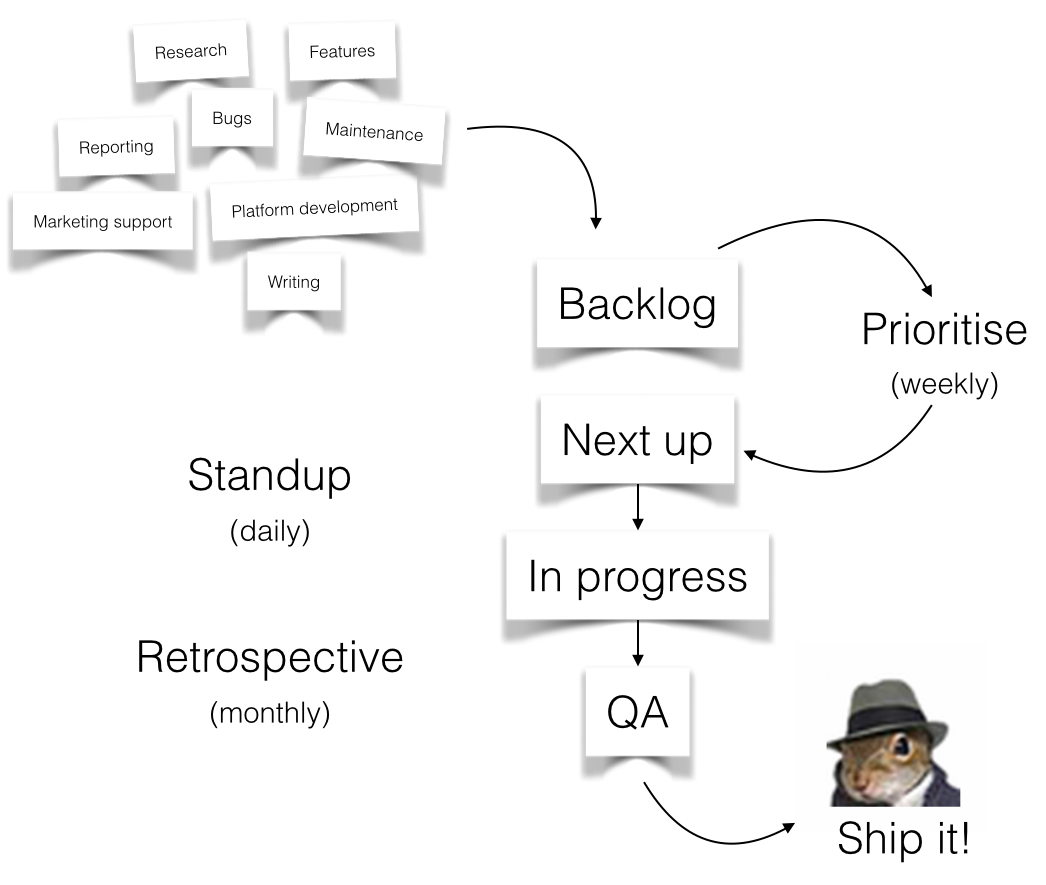The simplest way to prioritise your backlog
Posted on 04 September 2015 by Nick Boyce. Find me on Google+
The King & McGaw development team uses a scrum-like process to manage the features we build. It looks a little bit like this:

We’ve found this process to be super helpful for building things, but figuring out what to build is often more difficult.
“Everything is important”
- Difficult to prioritise business as usual (BAU) tasks against features when we have only one team
- Difficult to prioritise platform development (strategic impact) with features (customer impact)
- No procedure for researching the expected impact of a feature
- Difficult for development team to see what is coming down the pipeline
How we prioritise features now
Anyone in the company is allowed to add to the backlog, and at least once a fortnight we prioritise the features using this simple ranking system:

- Impact — expected creation or protection of revenue or other strategic objective
- Ease — the cost in man-hours to get the job done
The result is then multiplied by two and given a final percentage score (well, out of 98). Any task which is expected to have maximum ease (typically BAU tasks, less than 2 hours) can jump the queue and be scheduled for development at the discretion of the team. That’s it! Or is it?
What if we don’t have enough information to rank the feature?
If we can’t estimate the impact
- Data analysis! Extract the information you need from historical sales data, Analytics, server logs or whatever is appropriate Clarify objectives with stakeholders, especially if it’s an internal requirement
- Model the expected outcome (“lifting this metric by x % will have this effect”)
- In any of these scenarios we will add a book icon (📚) until we have enough information to rank the feature.
If we can’t estimate the ease
- There are multiple ways to solve the problem, and perhaps a simple implementation will have less of an impact than a complex one so it also affects impact. Pick one, and rank based on that.
- The problem has not been defined well enough for the developers to estimate.
- In any of these scenarios we will have a small workshop to uncover the challenges and propose the most likely outcome.
It’s not perfect
Ultimately it provides us a good structure without being overbearing. It also means we need to be disciplined. If there is something we really believe in, but it doesn’t have a ranking which will allow it to be developed, perhaps we need to look at ways to make it easier, or to have a higher impact.